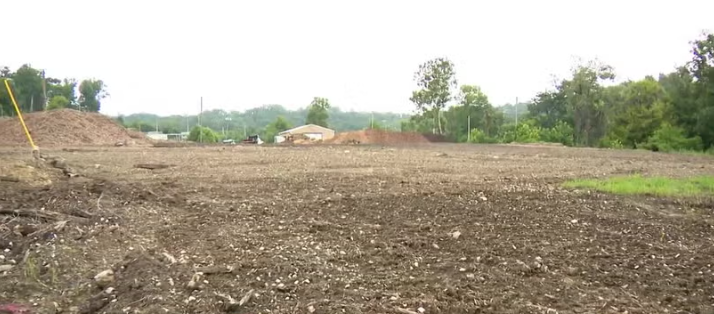Camp Small repurposes burned wood for artistry, landscaping, environmental projects

By Jenyne Donaldson
Click here for updates on this story
BALTIMORE, Maryland (WBAL) — Seven months after a massive fire swept through Camp Small, the remnants have been cleared. However, the site still has ways to go before it becomes compliant.
“We had this devastating event,” said Shaun Preston, a recycling coordinator at Camp Small. “And it looked like all of that material was lost. We all wanted to turn a blind eye to it.”
Instead, the community and city agencies found creative ways to reuse and repurpose tons of wood that burned in the December fire.
“We were left with about 9,000 tons of burnt material, out of a pile that was over 20,000 tons of logs,” said Preston.
According to Preston, some of the charred wood was used by artists for installations, or by gardeners for landscaping. However, most of it was used for environmental projects.
“The majority of it got used for slope stabilization at a quarantine landfill after it was ground into mulch,” said Preston. “And then, approximately 500 tons of the logs were used in wetland restoration down at Middle Branch.”
The mulch covers landfill slopes for stormwater management, while the logs provide habitats and structure along the shoreline.
“By pushing in these logs and creating tipis and structures underground, it will encourage habitat, while also stabilizing the soil content at the bottom,” said Preston.
Instead, the community and city agencies found creative ways to reuse and repurpose tons of wood that burned in the December fire.
“We were left with about 9,000 tons of burnt material, out of a pile that was over 20,000 tons of logs,” said Preston.
According to Preston, some of the charred wood was used by artists for installations, or by gardeners for landscaping. However, most of it was used for environmental projects.
“The majority of it got used for slope stabilization at a quarantine landfill after it was ground into mulch,” said Preston. “And then, approximately 500 tons of the logs were used in wetland restoration down at Middle Branch.”
The mulch covers landfill slopes for stormwater management, while the logs provide habitats and structure along the shoreline.
“By pushing in these logs and creating tipis and structures underground, it will encourage habitat, while also stabilizing the soil content at the bottom,” said Preston.
Please note: This content carries a strict local market embargo. If you share the same market as the contributor of this article, you may not use it on any platform.
